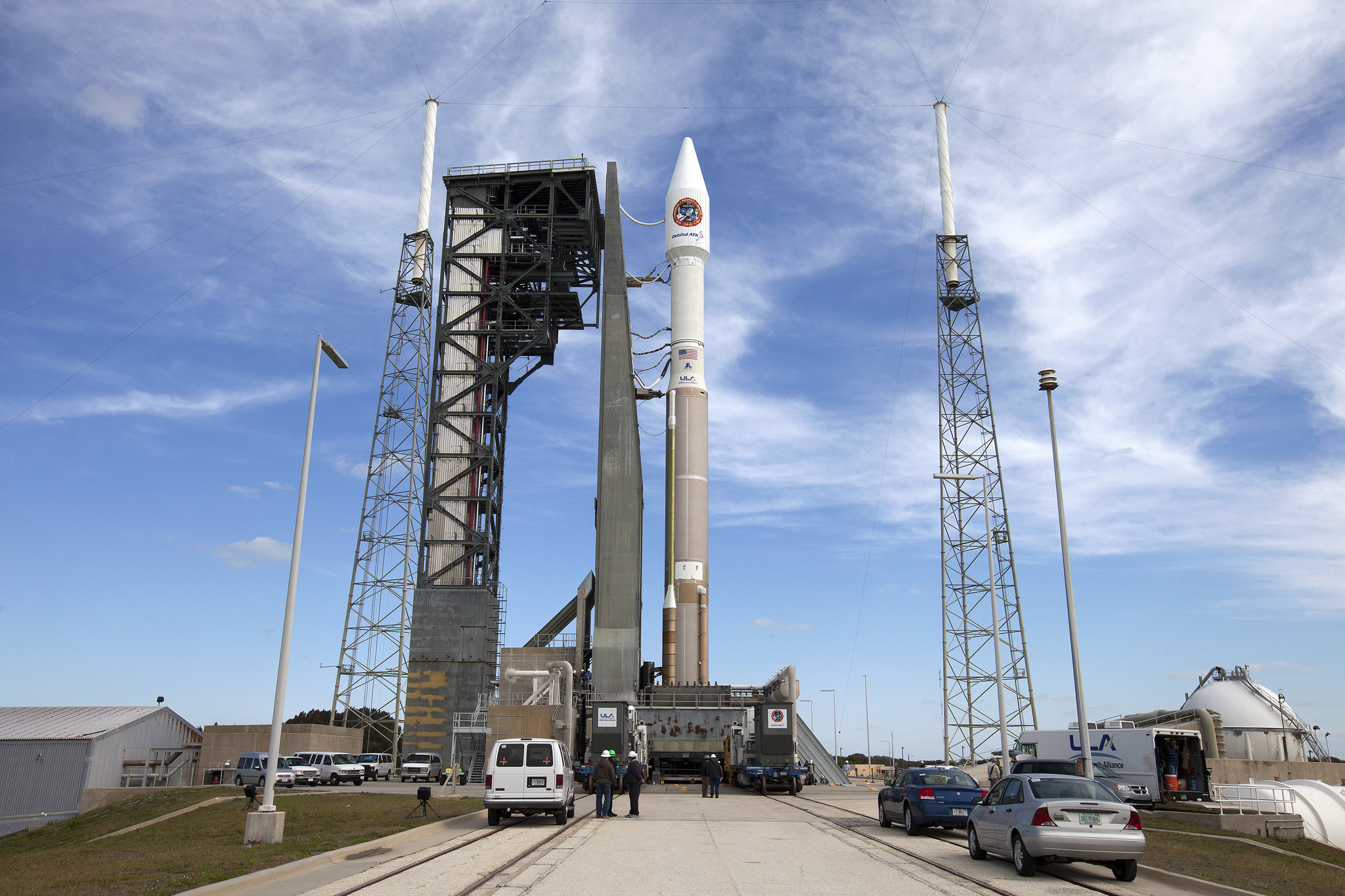Private Cygnus Cargo Ship Launches to Space Station Tonight: Watch It Live

An Orbital ATK Cygnus spacecraft is scheduled to launch toward the International Space Station tonight (March 22), and you can watch the liftoff live online.
The robotic cargo spacecraft is set to launch atop a United Launch Alliance Atlas V rocket from Cape Canaveral's Launch Complex 41 at 11:05 p.m. EDT (0305 GMT on March 23). Currently, NASA's current weather forecast predicts a 90% chance of good weather for the launch. You can watch the launch live here on Space.com, courtesy of NASA TV. Launch coverage will begin at 10 p.m. EDT (0200 GMT). The launch may even be visible to observers along the U.S. East Coast, depending on weather conditions.
Among other science experiments, the Cygnus spacecraft is carrying what is scheduled to be the largest piece of material ever set aflame in space. In total, the spacecraft will carry about 7,500 lbs. (3,400 kilograms) of research equipment, science experiments, crew supplies and vehicle hardware to the orbiting laboratory.
This is the fifth attempted launch of a Cygnus spacecraft as part of Orbital ATK's Commercial Resupply contract with NASA. All but one of the previous four launches were successful; in October, 2014, the company's Antares rocket exploded just second after liftoff.
This is the second "enhanced" Cygnus spacecraft to make a trip to the space station; the first enhanced version flew in December. The new version of the spacecraft has increased storage capacity compared to previous models. This particular Cygnus vehicle will carry more cargo to the station than any of the previous five Cygnus station re-supply missions.

"At the end of the day, these re-supply missions are critical," Kenneth Todd, the International Space Station operations integration manager, said during a news briefing yesterday (March 21). "They kind of become our lifeblood on the space station. So as we get into this regular cadence of flights, it really does allow us to do more. It keeps our crews good and healthy, and at the same time, it allows us to do the critical research that we're all wanting to do, that we want to do with this program."
Coverage of the launch will wrap shortly after liftoff, but will resume at about 12:45 a.m. EDT Wednesday (0445 GMT) for Cygnus' solar-array deployment. That will be followed by a post-launch briefing at about 1:00 a.m. EDT Wednesday (0500 GMT).
Get the Space.com Newsletter
Breaking space news, the latest updates on rocket launches, skywatching events and more!
If the launch is unable to proceed on Tuesday night, the next launch window will open on March 23 at 10:40 p.m. EDT (0240 GMT on March 24).
The Cygnus spacecraft is scheduled to arrive at the orbiting laboratory on Saturday, March 26, at approximately 6:40 a.m EDT (1040 GMT). The crewmembers currently on board the ISS will grab the Cygnus spacecraft using the station's robotic arm. Coverage of the rendezvous will begin at 5:30 a.m. EDT (0930 GMT), and at 9:15 a.m., NASA TV will have coverage of the crew installing the spacecraft at the bottom of the station's Unity module. You can also watch coverage of the arrival and installation here at Space.com, courtesy of NASA TV.
The Cygnus spacecraft will stay on the station for about two months, NASA said, during which time the crew will fill the cargo vehicle with several tons of trash. The spacecraft will then burn up during re-entry into Earth's atmosphere.
Follow Calla Cofield @callacofield. Follow us @Spacedotcom, Facebook and Google+. Original article on Space.com.
Join our Space Forums to keep talking space on the latest missions, night sky and more! And if you have a news tip, correction or comment, let us know at: community@space.com.

Calla Cofield joined Space.com's crew in October 2014. She enjoys writing about black holes, exploding stars, ripples in space-time, science in comic books, and all the mysteries of the cosmos. Prior to joining Space.com Calla worked as a freelance writer, with her work appearing in APS News, Symmetry magazine, Scientific American, Nature News, Physics World, and others. From 2010 to 2014 she was a producer for The Physics Central Podcast. Previously, Calla worked at the American Museum of Natural History in New York City (hands down the best office building ever) and SLAC National Accelerator Laboratory in California. Calla studied physics at the University of Massachusetts, Amherst and is originally from Sandy, Utah. In 2018, Calla left Space.com to join NASA's Jet Propulsion Laboratory media team where she oversees astronomy, physics, exoplanets and the Cold Atom Lab mission. She has been underground at three of the largest particle accelerators in the world and would really like to know what the heck dark matter is. Contact Calla via: E-Mail – Twitter









